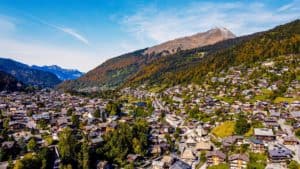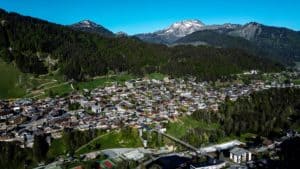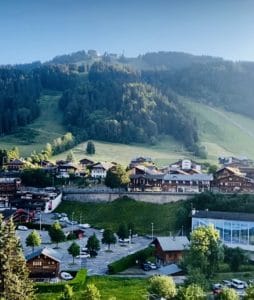
Morzine, a charming town nestled in the French Alps, has undergone significant transformations over the past century, evolving from a small farming village into a renowned ski resort. Over the last decade, urban planning in the region has increasingly focused on striking a balance between development and environmental sustainability, essential for maintaining its allure as both a tourist hotspot and a thriving local community.
A Shift Driven by Tourism and Sustainability
Morzine’s growth originally stemmed from its shift from agriculture to slate mining in the 19th century. However, the most pivotal changes took place with the rise of tourism, particularly skiing, in the mid-20th century. Infrastructure developments such as the construction of the Pleney lift in the 1930s and the creation of Avoriaz in the 1960s laid the groundwork for modern Morzine. The area eventually became part of the Portes du Soleil, one of the largest interlinked ski areas in the world. In the last decade, urbanism in Morzine has faced a new challenge: addressing the environmental impacts of tourism. With climate change threatening the snowfall that the region relies on, local initiatives have aimed to turn Morzine into a more sustainable destination. This movement encourages both locals and businesses to reduce their environmental footprint while fostering a more community-driven approach to sustainability.

Modern Urbanism in Action
Recent urban planning efforts in Morzine reflect this dual focus on growth and environmental stewardship. Key infrastructure projects include modernising ski lifts, implementing eco-friendly building designs, and promoting energy-efficient renovations. These changes have been driven by local regulations and zoning laws designed to encourage greener construction. Alongside these efforts, Morzine has seen a rise in housing developments and tourist accommodations to meet growing demand from winter sports enthusiasts and summer visitors. Despite this, the town has been careful to preserve its natural beauty, ensuring that new projects blend seamlessly with the alpine landscape and limiting urban sprawl.
Looking Ahead: Balancing Growth and Conservation
The future of urbanism in Morzine will likely continue to prioritise sustainability. As global temperatures rise and snowfall becomes more unpredictable, the town is developing long-term plans that focus on both adapting to and mitigating the effects of climate change. Future urban planning efforts are expected to integrate renewable energy solutions, expand sustainable tourism practices, and improve the quality of life for residents and visitors alike.
In conclusion, Morzine’s evolution has been shaped by its unique dual identity as both a historical village and a modern resort. Over the past ten years, the focus has increasingly shifted towards sustainability, ensuring that Morzine remains a vibrant and eco-conscious destination for years to come. By carefully balancing development with environmental conservation, Morzine continues to grow while staying true to its alpine heritage.
